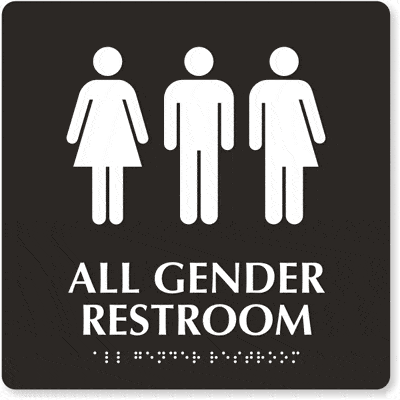Architectural issues surrounding all gender restrooms

Wednesday, May 4, 2016
By Mark Keane, AIA, LEED AP and Robert Neu, AIA, LEED AP
First they were called unisex. Then gender neutral. Now gender inclusive or all gender. Whatever you call these restrooms, colleges across the country are encountering this topic whenever they renovate or build new facilities on campus. Unfortunately for colleges and universities, the waters surrounding legal requirements are still murky so institutions are responsible for determining what is appropriate for their students and campus.
Politically and socially, the issue of gender inclusive restrooms is a sensitive one. As experts in collegiate architecture, Hastings+Chivetta has helped clients across the country by providing architectural guidance. While not a comprehensive list, below are a few architectural issues to weigh when making decisions for your new or renovated facility.
SINGLE- VS. MULTI-STALL
Typically, gender inclusive restrooms are single-stall rooms. As a general rule of thumb, four single restrooms require less square footage than four restrooms divided into a two-stall men’s restroom and a two-stall women’s restroom. The footprint for six single restrooms is nearly equal to a three-stall men’s restroom and a three-stall women’s restroom option. Not until the quantity reaches eight single restrooms is square footage saved by using the multi-stall option.
HARD COSTS
The hard costs for single-stall gender inclusive restrooms tend to be higher. Each restroom requires its own door, hardware, walls and finishes. In addition, each toilet room is required by code to include accessible handrails, as opposed to a multi-stall restroom in which only one stall includes accessible handrails.
Some cost savings are available. Individual lavatories for single-stall restrooms are less expensive than long, multi-sink vanities, and with the right design it is still possible to gain efficiencies by sharing plumbing chase walls. But overall, the hard costs for the single-stall option are higher.
PRIVACY
Some universities are considering multi-stall, gender inclusive restrooms. The biggest issue these schools are encountering is user privacy. Partitions are manufactured in a variety of sizes, which help reduce privacy concerns. Partitions are manufactured as high as 6’ 6”– compared to a standard 5’ 10” height ‑ and are intended to be installed as low as 4” off the ground. This option greatly increases privacy, creating more comfort in the multi-stall option.
Another possibility is to build full-height or near-full-height gypsum board walls, which are similar to changing rooms at department stores. Each restroom would have a typical door and feel like a small room, increasing privacy and cost.
NUMBER OF RESTROOMS REQUIRED
Because the courts are just beginning to consider lawsuits regarding restroom usage, building codes have not yet been updated to reflect gender inclusive restrooms when counting water closets in a building. Per code, only restrooms designated for women, men or family can count toward the total required. Single-stall gender inclusive restrooms can be counted, but the multi-stall version cannot and must be built above and beyond the total required by code.
Hastings+Chivetta’s experienced team can help guide you through the architectural issues regarding the growing number of options for restrooms in your facility.
About the authors: Mark Keane is a project designer with an expertise in collegiate facilities. He has more than 25 years of experience. Robert Neu is a project architect and head of quality control for Hastings+Chivetta. He has more than 20 years of experience.